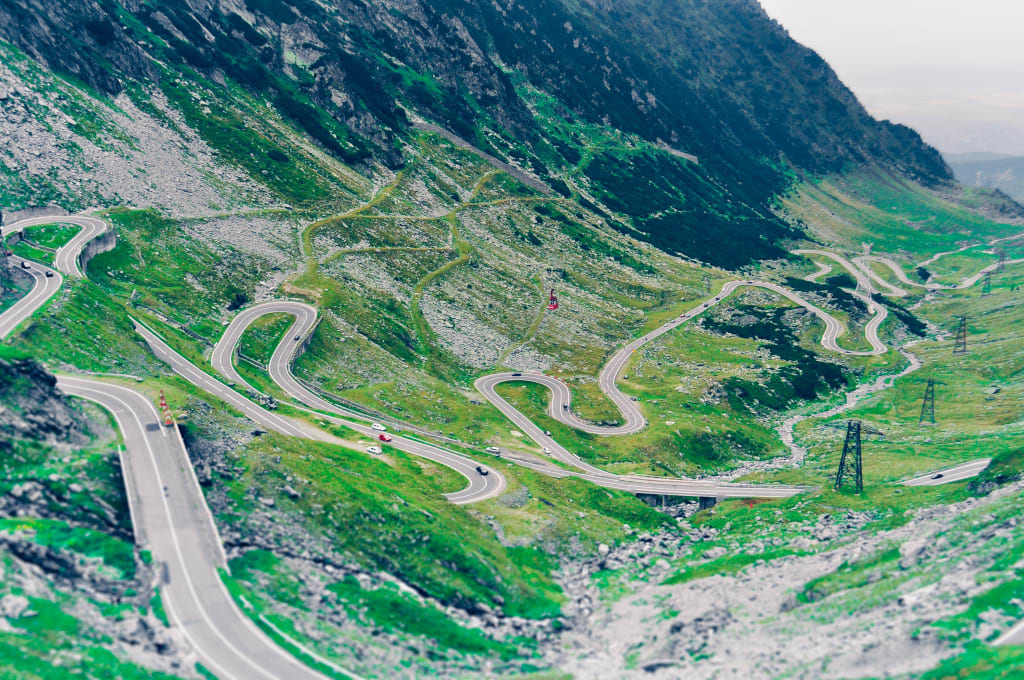Romania
everyone should learn how amazing of a place Romania is

Nestled in the heart of Eastern Europe, Romania is a country that often flies under the radar for travelers. However, those who venture beyond the beaten path will be rewarded with a wealth of natural beauty, rich history, and unique culture. Romania truly is a great place to visit and explore.
One of the most popular tourist spots in Romania is the Bran Castle. This Gothic fortress is famously associated with the legend of Dracula, and it attracts visitors from all over the world. The castle is perched on a hilltop and offers breathtaking views of the surrounding countryside. Visitors can explore the castle's many rooms and learn about the history of its former residents. It is a must-visit attraction for anyone interested in Romania's medieval past. Another notable tourist spot in Romania is the painted monasteries of Bucovina. These monasteries are known for their stunning frescoes and intricate religious artwork. The monasteries date back to the 15th and 16th centuries and are a testament to Romania's religious heritage. Visitors can marvel at the colorful paintings that adorn the walls and ceilings of these unique religious sites.
For those who love nature, the Danube Delta is a must-visit destination. This breathtaking wetland habitat is home to a diverse array of wildlife, including pelicans, otters, and wild horses. The Danube Delta is a protected area and is a paradise for birdwatchers and nature lovers. The medieval city of Sighisoara is another fascinating destination that is worth a visit. This UNESCO World Heritage Site is famous for its well-preserved old town, charming cobblestone streets, and colorful architecture. Visitors can wander the narrow streets and explore the many museums and historical sites in this picturesque city.
The earliest known inhabitants of Romania were the Dacians, who lived in the region from around the 10th century BC until the Roman conquest in 106 AD. The Dacians were proud and warlike people who built impressive fortresses and practiced metalworking, pottery, and agriculture. Their most famous leader was King Decebalus, who fought against the Roman Empire and is still celebrated as a national hero in Romania today. After the Roman conquest, the region that is now Romania was incorporated into the Roman Empire and became known as the province of Dacia. The Romans brought with them advanced technology, infrastructure, and culture, and many of their legacy can still be seen in Romania today, including the many ruins of Roman cities and fortresses that still stand.
In the Middle Ages, Romania was invaded by various tribes and nations, including the Goths, Huns, Slavs, and Magyars. In the 13th century, the region came under the rule of the Cumans, a nomadic people from the Asian steppes, who were eventually conquered by the Mongols. During this time, the Hungarian Kingdom also gained control over parts of Romania, and the Transylvanian region became an important center of commerce and trade. In the 16th century, Romania came under Ottoman Turkish rule, which lasted for over 300 years. During this time, the Romanian people were forced to convert to Islam, and their lands were heavily taxed and exploited. However, the Ottoman Empire also brought with them new technologies and trade connections, which helped to develop Romania's economy and culture.
In the 19th century, Romania gained independence from the Ottoman Empire and became a constitutional monarchy. The country went through a period of rapid modernization and industrialization, and it also experienced significant political upheaval, including the 1989 revolution that toppled the Communist regime of Nicolae Ceausescu.
The language of Romania, known as Romanian, is a Romance language that is spoken by approximately 24 million people worldwide. It is the official language of Romania, Moldova, and Vojvodina, and it is also spoken by many Romanian expatriates around the world. The Romanian language has its roots in the Latin language, which was spoken by the Roman Empire during its conquest and rule of the region that is now Romania. Over time, the Latin language evolved into a distinct Romance language that was influenced by various other languages, including Slavic, Hungarian, and Turkish.
The Romanian language is known for its rich vocabulary and complex grammar. It has many words that are derived from Latin, as well as Slavic and Turkish loanwords that were adopted during the country's long history of conquest and occupation. The language also has a unique grammatical structure that is different from other Romance languages, with complex verb conjugation and declension. One of the most fascinating aspects of the Romanian language is its use of diacritics, which are accent marks that are added to certain letters to change their pronunciation or meaning. For example, the letter "a" can have a breve accent mark to represent the sound "ă", which is not found in other Romance languages.
The Romanian language has also played an important role in the country's cultural and political history. During the 19th century, Romanian intellectuals and writers used the language to create a national identity and promote the country's independence from foreign rule. The language was also instrumental in the development of Romanian literature, which has produced many important writers and poets, such as Mihai Eminescu and Nichita Stănescu.
Romania is also famous for its traditional crafts, such as pottery, woodcarving, and embroidery. These crafts have been passed down through generations, and many villages in Romania still produce handcrafted items using traditional techniques. Visitors to Romania can find these crafts in local markets and souvenir shops, and they are a great way to take home a piece of Romanian culture. The cuisine of Romania is another important aspect of the country's culture. Traditional Romanian food is hearty and flavorful, often featuring meat, potatoes, and vegetables. Popular dishes include sarmale, cabbage leaves stuffed with meat and rice, and mici, small grilled sausages made with a mix of beef and pork. Romanian wine is also gaining a reputation for its quality, with several regions producing award-winning varieties.
Overall, Romania is a great place to visit and explore. Its natural beauty, rich history, and unique culture make it a must-see destination for any traveler looking for an authentic European experience. Whether you're looking for adventure, relaxation, or a bit of both, Romania has something to offer. So why not book your trip today and discover the magic of Romania for yourself?
About the Creator
Enjoyed the story? Support the Creator.
Subscribe for free to receive all their stories in your feed. You could also pledge your support or give them a one-off tip, letting them know you appreciate their work.






Comments
There are no comments for this story
Be the first to respond and start the conversation.